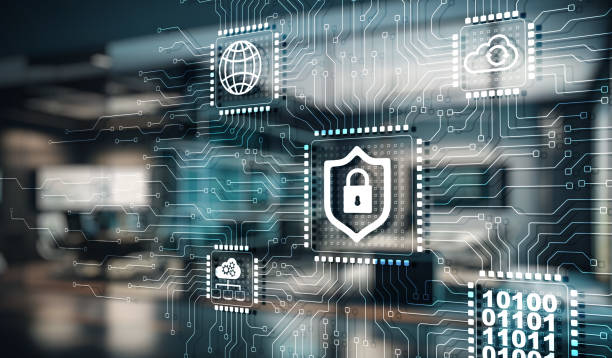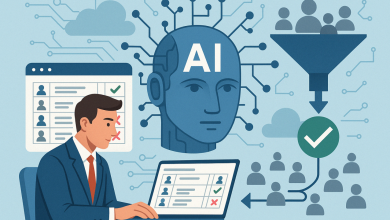Indonesia’s Expanding Transport Sector: Navigating Cybersecurity Challenges
The Transport Sector of Indonesia Is Facing Pressing Cybersecurity Challenges

Indonesia’s transportation sector is undergoing a transformative decade marked by significant government investment and development. Under President Joko Widodo’s administration, ambitious projects like the Whoosh high-speed rail, Mass Rapid Transit (MRT), and Light Rail Transit (LRT) are reshaping connectivity across the nation. The government has also constructed 26 new airports, 39 sea toll routes, and over 10,000 kilometres of railway lines, alongside modernising 58 train stations and implementing urban mass transit systems in six cities.
This extensive infrastructure supports Indonesia’s economic growth, facilitating tourism, trade, and daily travel for millions. During the upcoming Christmas and New Year season, the Ministry of Transportation projects 110.67 million travellers—a reflection of the sector’s critical role in connecting the nation. However, as these systems grow more advanced, they also face an evolving landscape of cybersecurity threats, underscoring the importance of robust digital defences.
A Sector Under Digital Siege
With transportation becoming increasingly reliant on digital systems, it has emerged as a significant target for cybercriminals. From IoT-enabled traffic management systems to Artificial Intelligence (AI)-enhanced public transport scheduling, technology underpins the modernisation of transport infrastructure. While these advancements enhance efficiency and safety, they also create vulnerabilities that bad actors can exploit.
Earlier this year, Indonesia’s Temporary National Data Centre suffered a ransomware attack, disrupting over 210 public services, including immigration systems at airports and online school registrations, while risking exposure of sensitive government data. According to Check Point’s Threat Intelligence Report, transportation is now the top targeted industry in Indonesia, experiencing an average of 11,548 weekly cyberattacks per organisation over the last 6 months—significantly above the APAC average (under 2,000 attacks).
This trend reflects a challenge, with critical infrastructure increasingly under siege globally. Notably, cyberattacks on transport systems can have widespread consequences, potentially disrupting supply chains, halting passenger services, and posing risks to public safety.
Challenges in Securing Critical Infrastructure
Protecting transport systems against cyber threats is a complex endeavour. Many organisations in the sector are still adapting to the rapid pace of digital transformation. Legacy systems, such as those in rail and aviation, were not designed with cybersecurity in mind. Updating or replacing these systems is often costly and disruptive, leaving them vulnerable to attacks. These legacy systems frequently serve as entry points for cybercriminals to infiltrate broader networks, potentially compromising interconnected systems like ticketing, scheduling, and safety operations.
The growing complexity of digitalised transport networks also expands the attack surface. IoT devices, AI platforms, and cloud-based services, while improving efficiency and passenger experiences, introduce vulnerabilities that attackers can exploit. A single compromised sensor, for instance, could disrupt an entire rail network or halt operations at an airport. Smaller transport operators often lack the resources to implement comprehensive cybersecurity measures, leaving critical areas inadequately defended.
Adding to these challenges is the human factor and regulatory inconsistencies. Experts have postulated that humans are typically the weakest link in cybersecurity, often playing a significant role in enabling breaches. Employees and contractors can inadvertently expose systems to threats through weak passwords or phishing attacks. Meanwhile, the absence of unified cybersecurity standards across the sector complicates coordination and leaves gaps in defences. As transportation networks become increasingly connected and critical to national infrastructure, addressing these challenges requires embedding cybersecurity at the design stage, fostering cross-sector collaboration, and investing in employee training to build a culture of resilience.
“Cyber threats are a growing reality for all industries, but the transportation sector’s interconnected nature makes it particularly susceptible,” notes Teong Eng Guan, Regional Director, Southeast Asia & Korea, at Check Point Software Technologies. “A successful cyberattack on the transportation sector could paralyse critical systems, such as airline and railway booking platforms, endanger the safety of staff and passengers, and block access to sensitive data. The impact extends far beyond transportation. We have witnessed DDoS attacks on railways and airports amid geopolitical tensions, as well as hacktivist groups compromising systems tied to industries like mining and oil, exposing sensitive data to advance their agendas. These incidents underscore the pressing need for robust cybersecurity measures to protect not only operational continuity but also public trust and economic stability.”
Collaborative Efforts for Cybersecurity, Resilience
Addressing these challenges requires a collective effort. Governments, private operators, and technology providers must work together to strengthen cybersecurity measures across the transportation ecosystem.
- Building Security into Infrastructure Design. Modern transportation systems should incorporate cybersecurity into their foundational design. Measures like endpoint detection and response (EDR), encrypted communications, and zero-trust architectures are essential to safeguarding sensitive systems.
- Enhancing Public-Private Collaboration. Partnerships between government bodies and private operators can foster innovation and preparedness. Regular risk assessments, simulations, and coordinated incident response protocols are vital components of this collaboration.
- Training and Awareness. Cybersecurity awareness among employees is crucial. Providing training to recognise phishing attempts and establishing clear reporting protocols can help mitigate threats effectively.
- Leveraging Artificial Intelligence. AI-powered tools can monitor vast amounts of data from sensors and IT systems in real time, identifying anomalies that could signal potential cyberattacks. Such systems are invaluable for detecting and responding to threats proactively.
- Regulatory Standards and Frameworks. Implementing clear cybersecurity standards, inspired by initiatives like the EU’s Network and Information Systems (NIS) Directive, ensures consistent protection across the transport sector.
- Testing Preparedness. Regular simulations of cyberattacks allow organisations to identify weaknesses and refine their response strategies, minimising disruptions in the event of a real incident.
Looking ahead, Check Point experts predict cyberattacks on transport systems will grow more sophisticated, particularly with the integration of AI and IoT technologies. Ransomware attacks targeting critical infrastructure, such as airports or rail networks, are expected to rise, with potential consequences for both economic and public safety. Despite these challenges, advancements in cybersecurity technologies offer hope. Predictive analytics, AI-driven threat detection, and enhanced international collaboration on intelligence sharing are poised to strengthen the resilience of transport systems.
Indonesia’s transportation sector is a cornerstone of its economic progress and connectivity, serving millions of travellers and supporting vital trade networks. As the nation continues its ambitious modernisation, it is equally important to ensure that cybersecurity measures evolve in tandem. By embracing a proactive approach and fostering collaboration across stakeholders, Indonesia can secure its transport infrastructure, safeguarding it against future threats while continuing to drive progress.




